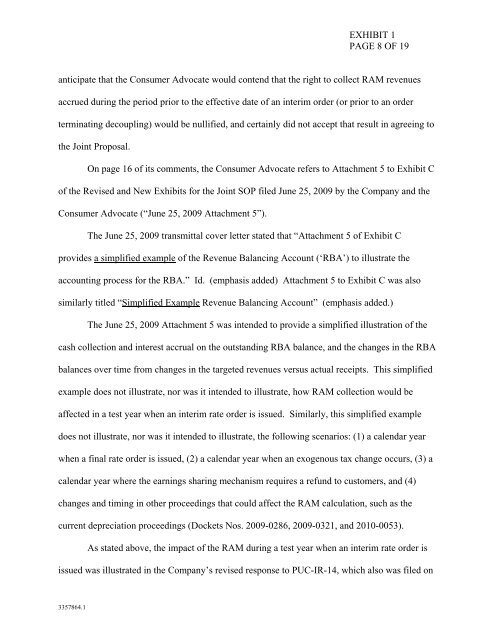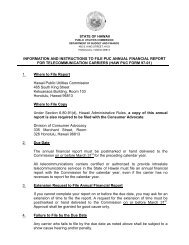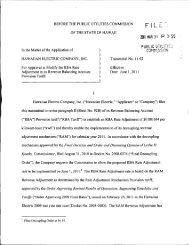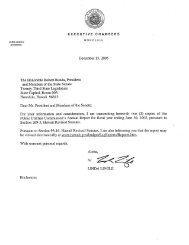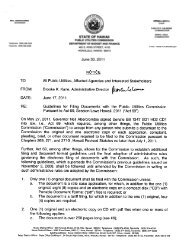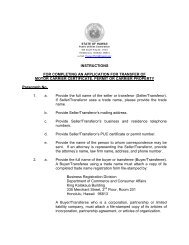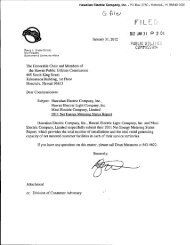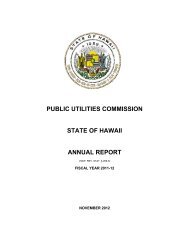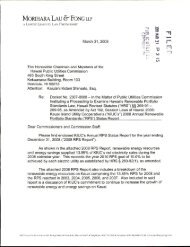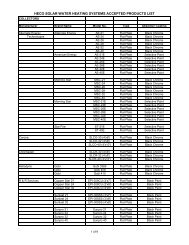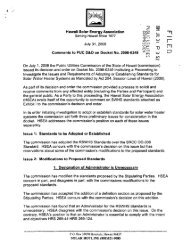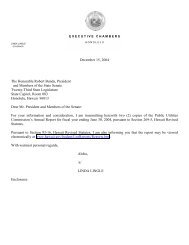HECO's Response to Consumer Advocate's Comments, 4/29/11
HECO's Response to Consumer Advocate's Comments, 4/29/11
HECO's Response to Consumer Advocate's Comments, 4/29/11
You also want an ePaper? Increase the reach of your titles
YUMPU automatically turns print PDFs into web optimized ePapers that Google loves.
EXHIBIT 1PAGE 8 OF 19anticipate that the <strong>Consumer</strong> Advocate would contend that the right <strong>to</strong> collect RAM revenuesaccrued during the period prior <strong>to</strong> the effective date of an interim order (or prior <strong>to</strong> an orderterminating decoupling) would be nullified, and certainly did not accept that result in agreeing <strong>to</strong>the Joint Proposal.On page 16 of its comments, the <strong>Consumer</strong> Advocate refers <strong>to</strong> Attachment 5 <strong>to</strong> Exhibit Cof the Revised and New Exhibits for the Joint SOP filed June 25, 2009 by the Company and the<strong>Consumer</strong> Advocate (“June 25, 2009 Attachment 5”).The June 25, 2009 transmittal cover letter stated that “Attachment 5 of Exhibit Cprovides a simplified example of the Revenue Balancing Account (‘RBA’) <strong>to</strong> illustrate theaccounting process for the RBA.” Id. (emphasis added) Attachment 5 <strong>to</strong> Exhibit C was alsosimilarly titled “Simplified Example Revenue Balancing Account” (emphasis added.)The June 25, 2009 Attachment 5 was intended <strong>to</strong> provide a simplified illustration of thecash collection and interest accrual on the outstanding RBA balance, and the changes in the RBAbalances over time from changes in the targeted revenues versus actual receipts. This simplifiedexample does not illustrate, nor was it intended <strong>to</strong> illustrate, how RAM collection would beaffected in a test year when an interim rate order is issued. Similarly, this simplified exampledoes not illustrate, nor was it intended <strong>to</strong> illustrate, the following scenarios: (1) a calendar yearwhen a final rate order is issued, (2) a calendar year when an exogenous tax change occurs, (3) acalendar year where the earnings sharing mechanism requires a refund <strong>to</strong> cus<strong>to</strong>mers, and (4)changes and timing in other proceedings that could affect the RAM calculation, such as thecurrent depreciation proceedings (Dockets Nos. 2009-0286, 2009-0321, and 2010-0053).As stated above, the impact of the RAM during a test year when an interim rate order isissued was illustrated in the Company’s revised response <strong>to</strong> PUC-IR-14, which also was filed on3357864.1


